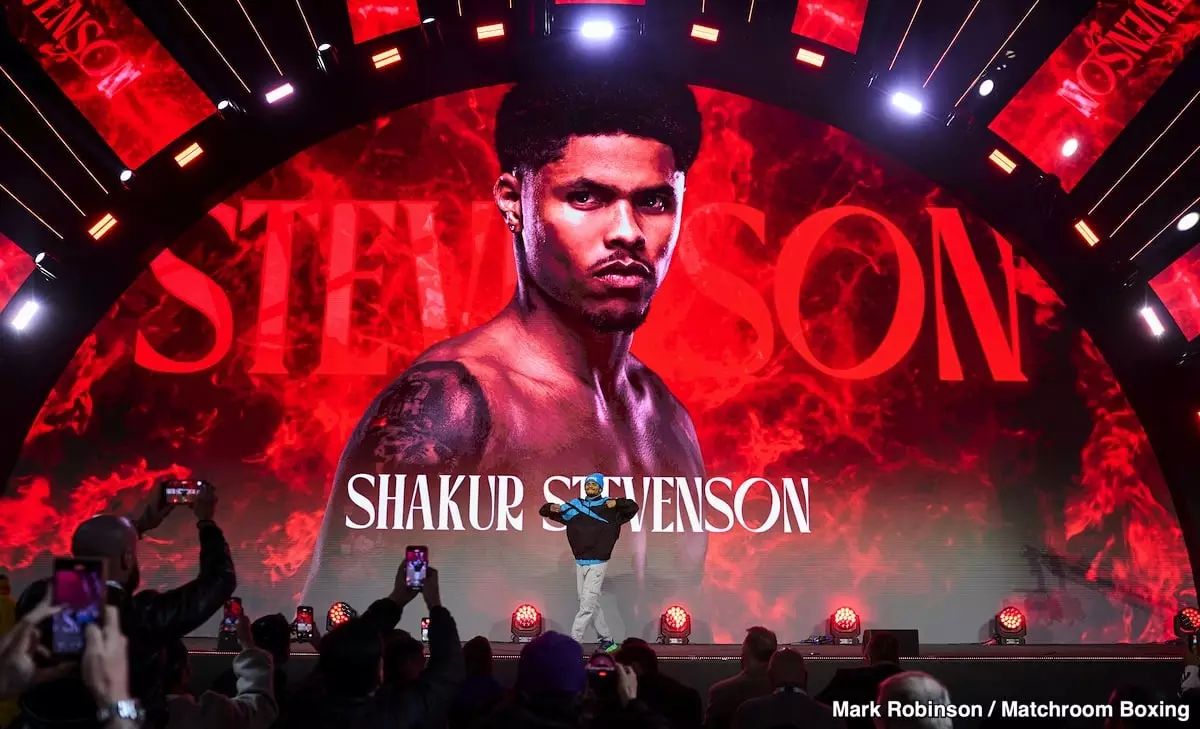In the realm of professional boxing, perception is everything. With the advent of social media, streaming platforms, and mixed martial arts (MMA), the expectations of boxing fans have shifted dramatically, particularly among younger audiences. Tim Bradley’s recent commentary on Shakur Stevenson highlights this generational divide. Bradley argues that younger fans, conditioned by the rapid-fire, high-octane entertainment of modern technology, often label fighters like Stevenson as “boring.” This sentiment reflects a broader tendency to value explosive finishes over technical prowess and strategic execution. It raises questions about the future of a sport that has historically celebrated the beauty of skill, often manifested in the art of “hitting and not getting hit.”
The Fight for Attention
As a boxing commentator, Bradley notes that today’s fans exhibit shorter attention spans, demanding intense action and immediate gratification. This phenomenon can be attributed to the dominance of MMA, where fighters often engage in more frenetic bouts that appeal to the current digital generation. The promotion machinery behind these events capitalizes on this appetite for excitement, showcasing bouts that frequently end with decisive knockouts. In stark contrast, Stevenson’s methodology—a subtle, tactical approach that emphasizes evasion and accuracy—often fails to resonate with an audience more interested in highlight-reel knockouts than nuanced techniques.
This pressing need for melodrama in sport raises concerns about the identity and integrity of boxing. Are we witnessing the sidelining of technical fighters in favor of crowd-pleasing brawlers? The implication is that Stevenson’s style, which has garnered him an undefeated record, may be undervalued as the sport transforms into one more aligned with the audience’s yearning for instant thrills. This is a problematic trend, one that risks compromising the art of boxing for fleeting entertainment.
The Business of Boxing
With millions at stake, promotional companies are increasingly risk-averse; they cater their fight cards to what they believe will draw in larger viewership and revenue. Networks are less inclined to showcase fighters who exhibit a “boring” style, as evidenced by Stevenson’s exclusion from main card slots following less thrilling performances. Rather than relying on producing fights that highlight varied skill sets, promoters focus on pairing high-action fighters with common appeal. Subsequently, Stevenson’s recent match against the lesser-known Josh Padley instead of more formidable opposition like Jadier Herrera underscores this trend.
Promoters and broadcasters want engaging fights that attract ratings, yet by sidelining skilled but less flamboyant fighters, they inadvertently create an echo chamber that prioritizes surface-level excitement over foundational mastery. The paradox lies in the fact that boxing, more than any sport, thrives on a balance between styles and strategies. Placing a premium solely on knockouts risks eroding the diverse fabric of the sport and marginalizing fighters whose skill sets stand as testaments to its rich history.
The Social Media Influence
Stevenson’s online persona further complicates public perception. Even with daily posts and high-profile promoters like Eddie Hearn, he fails to engender excitement. Social media’s influence has merged the realms of persona and performance, where charisma can often overshadow technique. Fans gravitate to personalities that engage them beyond the ring. This demographic shift towards personal branding means fighters must cultivate an image that resonates, regardless of their actual fighting style.
In the age where highlights are just a swipe away, subtleties like footwork, defensive maneuvers, and strategic engagements draw less fascination. Fans may not comprehend the nuances involved in a defensive masterclass, which, while thrilling in a more traditional sense, can seem lackluster when juxtaposed against the visceral displays common in other fighting sports.
A Call to Appreciate Technique
As the dialogue around the sport continues to evolve, there remains hope for a season of enlightenment where fans are encouraged to appreciate boxing’s rich history and the skill behind the technique. For Bradley and others advocating for a richer understanding of the sweet science, there is an opportunity to educate rather than alienate. Enhancing the dialogue around boxing’s intricacies can help forge a new generation of fans who appreciate both the thrill of a knockout and the beauty of a ballet in motion—a balance that has long defined the sport.
In embracing this duality, boxing can reclaim its narrative, championing fighters like Stevenson, who are driven as much by strategy and skill as by the pursuit of knockout glory. The future of boxing may hinge on this very balance, revitalizing the art form while adapting to the modern fan’s needs without losing its soul.

